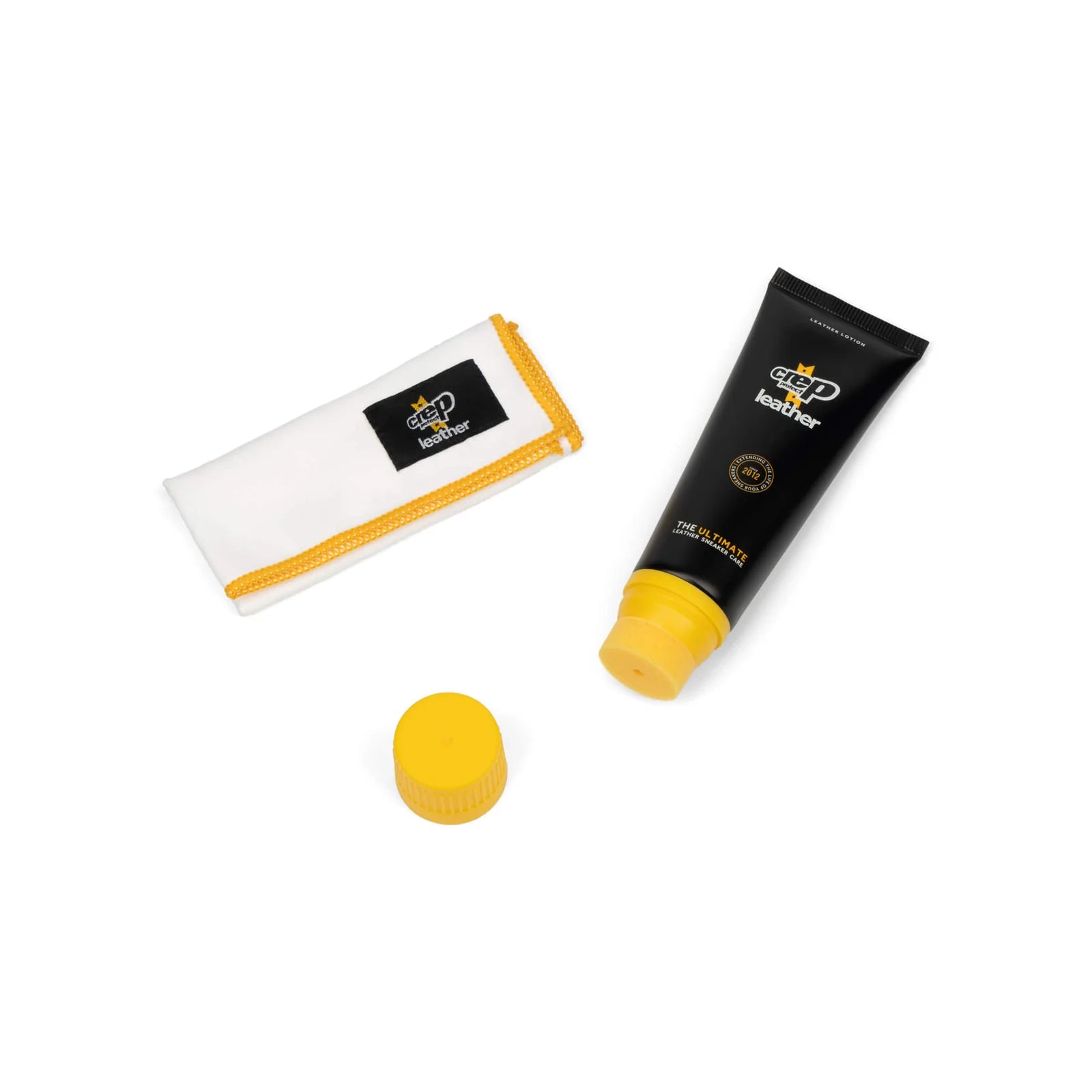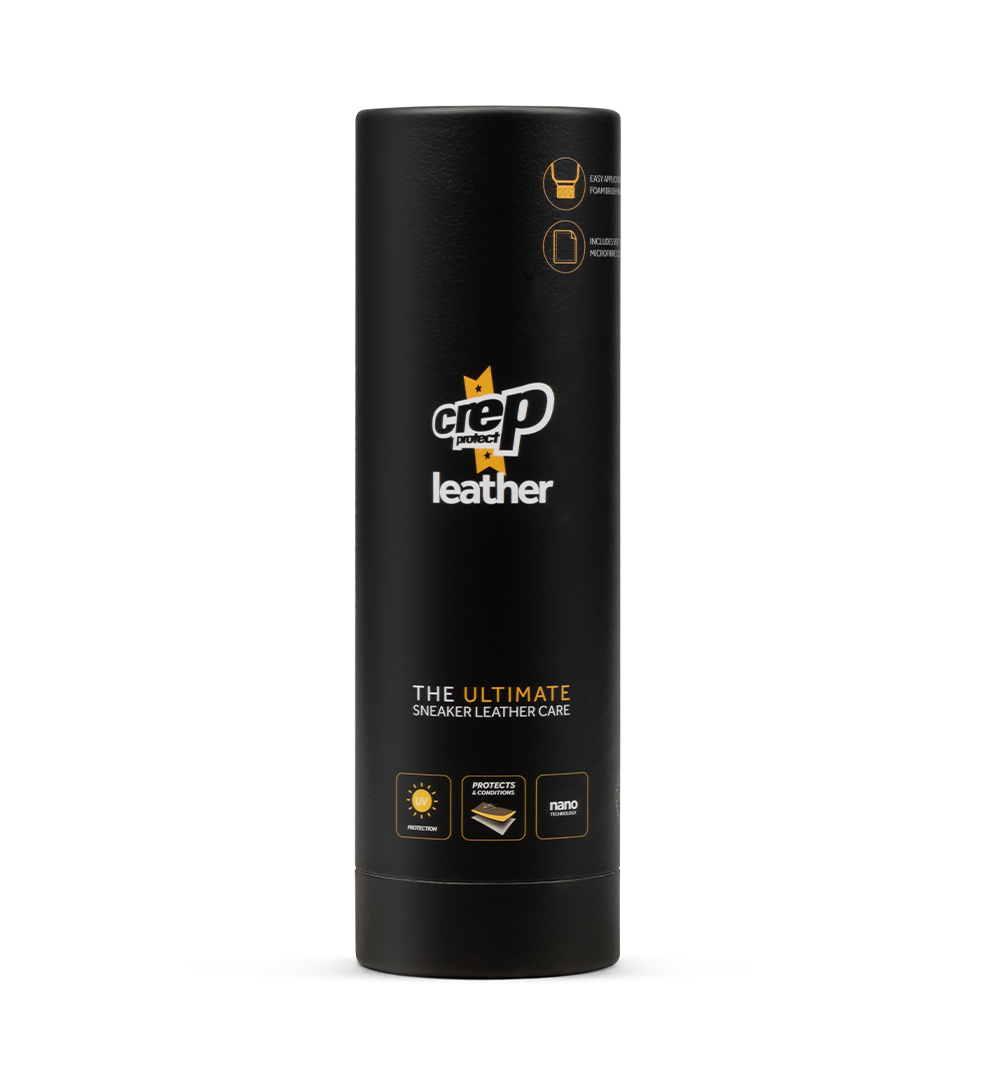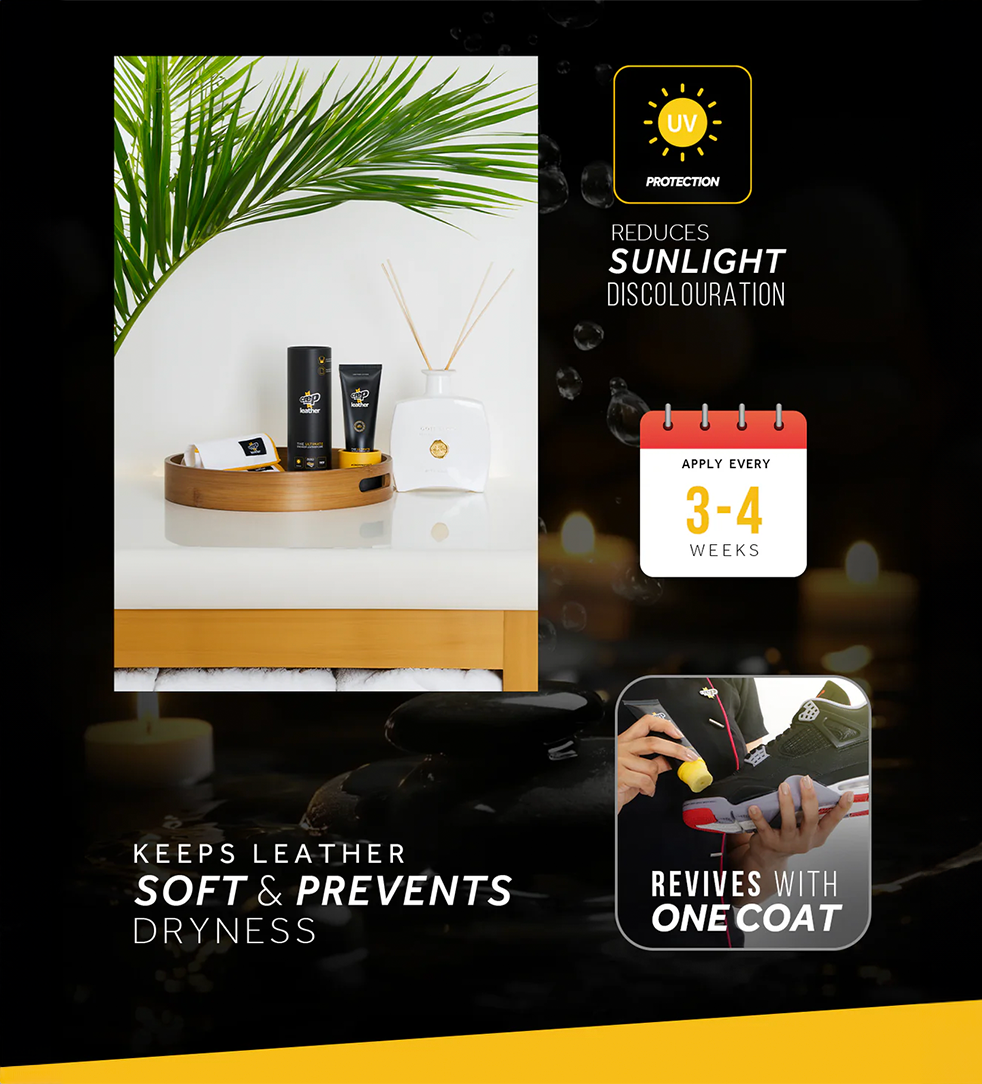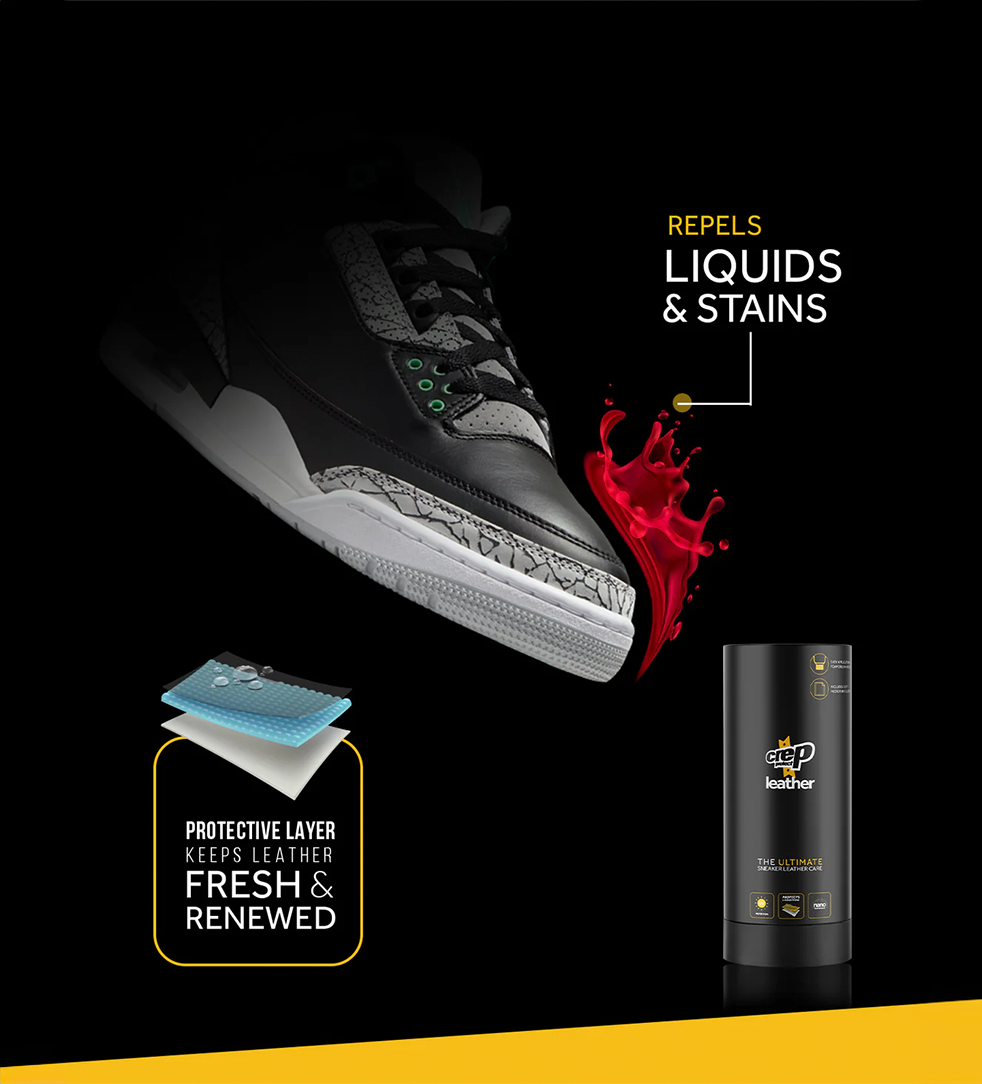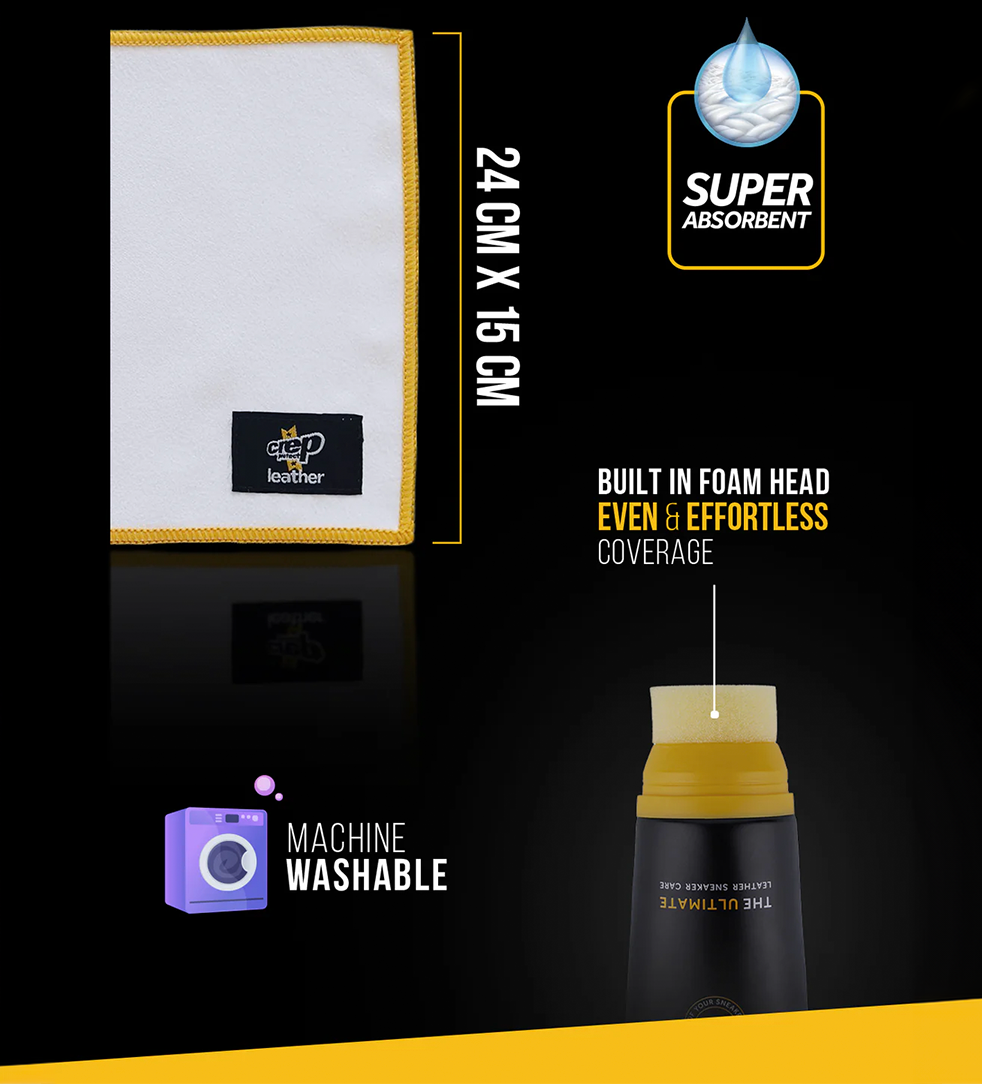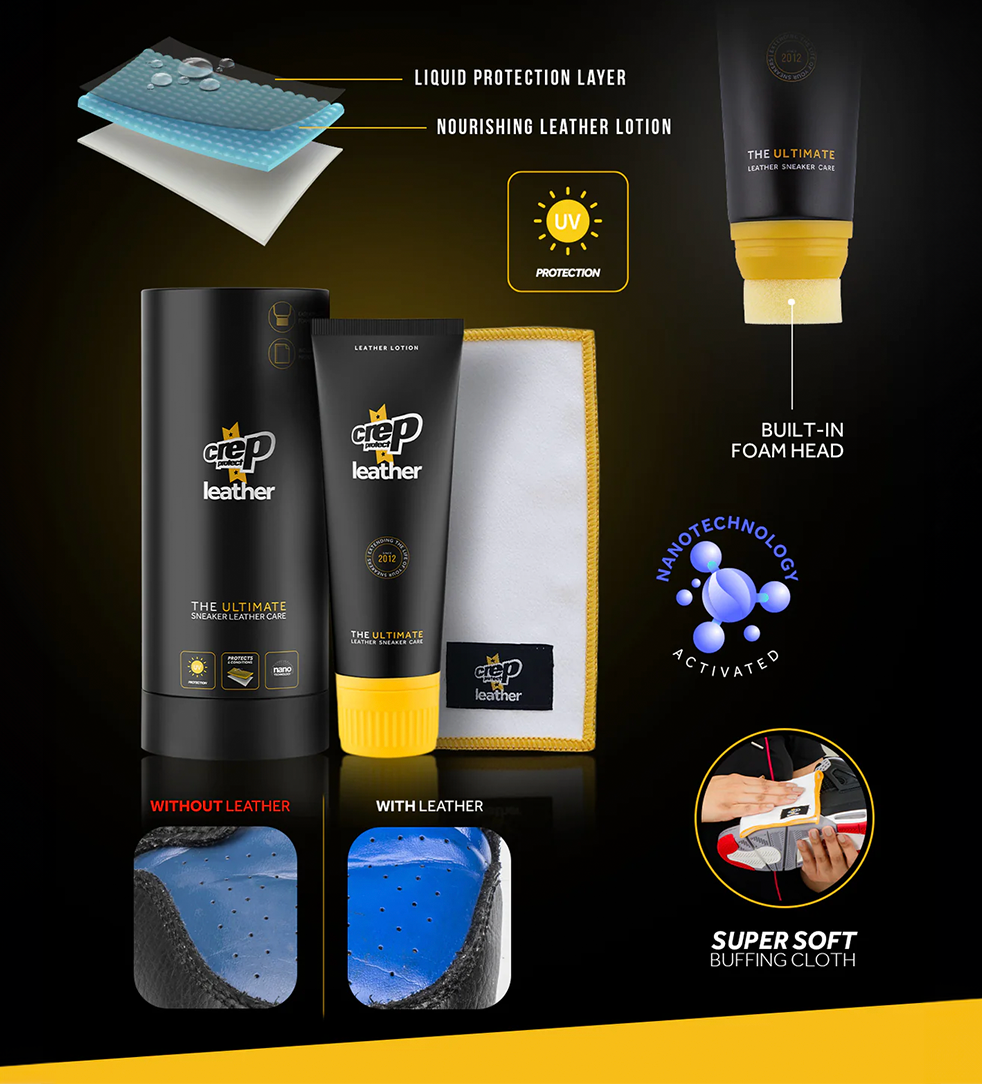Crep Protect Leather Lotion stands out due to its nourishing formula that rejuvenates and restores leather sneakers and incorporates advanced nanotechnology to repel water, liquids, and stains.
Q. Can Crep Protect Leather Lotion be used on all types of leather?
We recommend conducting a patch test on a hidden area of your leather sneakers before full application to ensure compatibility. While designed for a wide range of leather types, results may vary depending on the specific leather's finish and condition.
Q. How do I apply Crep Protect Leather Lotion for the best results?
Start by cleaning your leather sneakers. Open Crep Protect Leather Lotion, remove the protective seal and apply a small amount to the foam head. Patch test on a hidden area. If no adverse effects are observed, apply the lotion in circular motions until the leather is saturated, then remove any excess lotion with the provided buffing cloth.
Q. How often should I use Crep Protect Leather Lotion on my sneakers?
The frequency of use depends on how often the sneakers are worn and the conditions they're exposed to. For regular wear, using the lotion once every few weeks or as needed to maintain the leather's moisture and protect against stains is advisable.
Q. Is Crep Protect Leather Lotion safe to use on coloured leather?
Yes, it is designed to be safe for use on both coloured and natural leather. However, a patch test is still recommended to ensure that the lotion does not affect the colour of your specific leather sneakers.
Q. Can Crep Protect Leather Lotion protect my sneakers from heavy rain?
While the lotion is formulated with nanotechnology to offer water and stain repellency, it is not a substitute for waterproofing. It can provide a level of protection against light to moderate exposure to liquids but is not intended for extreme weather conditions.
Q. What should I do if the lotion gets on non-leather parts of my sneakers?
Crep Protect Leather Lotion accidentally gets applied to non-leather parts of your sneakers, gently wipe it off with a damp cloth as soon as possible. For more delicate materials, consider using a dry, soft brush to remove any residue.

